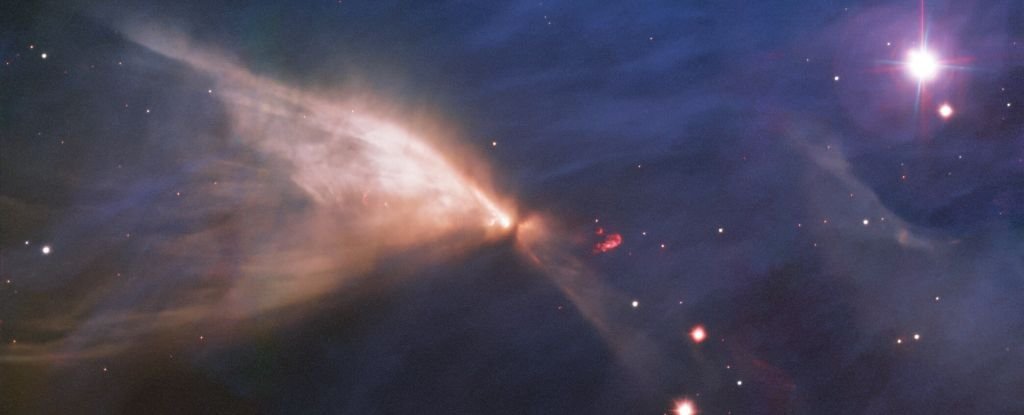An ethereal structure in interstellar space has come out as a by-product of the birth of a star.
It’s called the Chamaeleon Infrared Nebula and is located about 520 light-years away, and in a new image from the NSF NOIRLab’s International Gemini Observatory in Chile, it appears in the sky like a pale gossamer butterfly wing.
In the middle of the structure, there are turbulent processes at play as the star comes together.
Stars come into being when dense clumps in clouds of molecular gas collapse, spinning, under their own gravity. As they spin, the material is drawn into an accretion disk that feeds into the growing protostar – the mass of gas that will become the star.
With time, this protostar grows and begins producing a powerful stellar wind. The material falling into the protostar starts to interact with its magnetic fields. This material flows along magnetic field lines to the poles, where it is blasted into space in the form of powerful plasma jets.
This is the process that we witness when we see the Chamaeleon Infrared Nebula (so named because it glows brightly in infrared, although this image is in optical wavelengths). The ‘wing’ is a tunnel carved out of the cloud of gas around the star by one of the jets from the protostar.
The little star’s illumination occurs from within, and it reflects off the gas structures to create what we call a reflection nebula. The star itself is obscured by a vertical dark band, seen at the narrowest point.
This part, according to the scientists, is the protostar’s accretion disk, viewed edge-on. A red blob to the right of this disk from our perspective is a point at which a blob of material ejected from the star slammed into the surrounding gas.
This process creates short-lived, bright patches of nebulosity known as Herbig-Haro objects. This one is known as HH 909A. Astronomers watching carefully can observe Herbig-Haro objects change on a timescale of just a few years.
The winds and jets from the star also blow away material from around the protostar, eventually cutting off its supply of gas and therefore its ability to grow further.
By that time, the star should have gained enough mass to generate sufficient pressure and heat and its core to ignite nuclear fusion, kicking it onto the main sequence as a full star.

